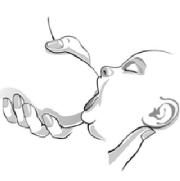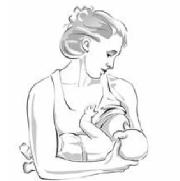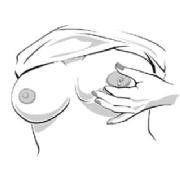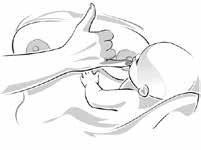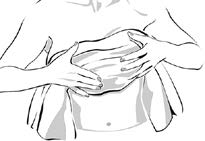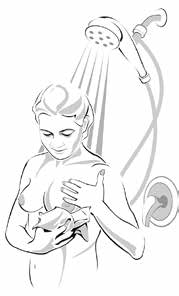- Rinse your breasts with water only and air dry. Do not use soap on your nipples. Soap may dry your nipples and cause them to crack
- Wear a bra that fits well and is not too tight. Do not wear a bra with underwire
- After breastfeeding express some breast milk onto your nipples and the dark area around them to help protect the skin. Let the breast milk dry before putting on your bra
Breastfeeding should not be painful when your baby is positioned and latched properly.
There may be some nipple tenderness in the first week after birth. This should get better each day. Breastfeeding should not be painful when your baby is positioned and latched properly. Get help right away if your nipples are still painful after checking that your baby is latched and positioned on the breast properly.
Check that your baby’s:
- Mouth is opened wide
- Lips are curled out
- Chin is pressed into your breast
- Sucking and swallowing breast milk
Check that your baby’s:
- Head and body are raised to your breast
- Head is at the level of your breast
- Chest is facing your tummy
- Mouth is facing your nipple
After Breastfeeding
- Express some breast milk onto your nipple and the dark area (areola) around it (only if there is no nipple damage around or thrush)
- Let breast milk dry before putting on your bra
Taking your Baby off Your Breast
-
Break the suck by:
- Slipping your finger into the corner of your baby’s mouth; or
- Pulling down on your baby’s chin
Apply cold or warmth to your breast, use whichever feels best.
How to Apply Cold:
Cold compresses can be:
- Gel pack wrapped in a cloth
- Bag of frozen vegetables wrapped in a cloth
Frozen wet towel
Note: Limit exposure to cold to a few minutes to prevent any trauma to the skin.
How to Apply Warmth
You can put warmth on your breast by:
- Having a warm shower until breast milk starts to flow
- Placing a warm towel on your breast for a few minutes until breast milk starts to flow
Warmth may also be applied to your breast using a:
- Warm wet disposable diaper
- Heating pad on low
- Hot water bottle wrapped in a cloth
Next gently massage your breasts and express some breast milk until the area around your nipple feels soft. Breastfeed your baby often until your breasts are no longer hard.

